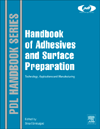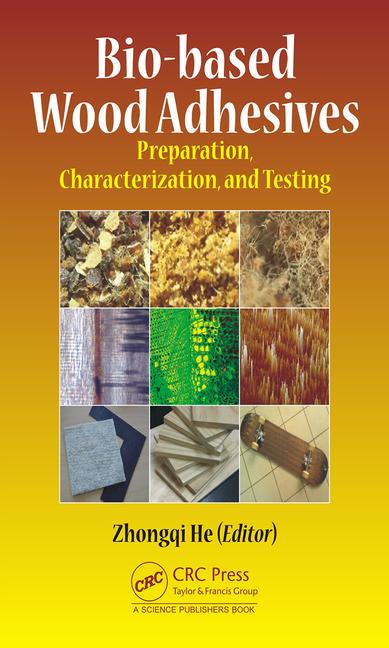Advancing Industry Standards for Hygiene, Efficiency and Sustainability Through Solvent-Free Adhesives

Supersmario / iStock / Getty Images Plus
As the packaging industry focuses increasingly on mitigating environmental impact through product regulations and streamlining manufacturing through technological innovations, the concurrent importance of products' impact on industrial hygiene should carry similarly significant weight.
Versatile products like solvent-free adhesives, which play an integral role across many industries including packaging, have long been formulated with adhesive-promoting isocyanates and polyols. These chemicals are fast-curing and create strong, reliable adhesion for an effective end-product. However, while isocyanates and polyols improve the performance of solvent-free adhesives, they carry health warnings and require special handling.
While not known to cause cancer in humans, isocyanates are classified as potential carcinogens, which has motivated packaging converters and suppliers to provide the industry with products that have lower or capped concentrations of isocyanates. Europe’s Registration, Evaluation, Authorization and Restriction of Chemicals (REACH) regulations place strict limits on isocyanates by capping concentrations at 0.1% and requiring special applications for use of higher risk categories of isocyanates. Training for employees handling isocyanates has also recently become mandatory to prevent any potential resulting respiratory symptoms or harmful exposures. Regulations for isocyanates in the United States are governed by the Occupational Safety and Health Administration (OSHA), which do not require safety training and do not enforce concentration limits, using permissible exposure limits (PELs) for airborne contaminants instead.
In addition to isocyanates, traditional aromatic solvent-free adhesives can also generate primary aromatic amines (PAAs). The formation of PAAs occurs by reaction between residual isocyanic monomers and water molecules at the surface of the inner layer of a package. The curing time for packages must often be extended to allow PAAs to react to ensure they do not migrate into the package. To limit curing time and boost efficiency, industry suppliers have increased efforts to achieve immediate PAA removal from aromatic solvent-free adhesives.
Some packaging industry suppliers1 are promoting aromatic solvent-free adhesives that limit or eliminate isocyanates and PAAs to ease handling restrictions and reduce the chance for incidental exposure, while enabling easier compostability and recyclability for a reduced carbon footprint.
Ultra-low Monomer Solvent-Free Adhesives
One category of solvent-free adhesives designed with no isocyanates are aliphatic adhesives. These adhesives are often solvent-free with strong UV-resistance, making them a top choice for outdoor applications. While aliphatic adhesives may seem like the best alternative to traditional aromatic solvent-free adhesives containing isocyanates, they are more expensive and less cost-effective for brand owners and converters.
To meet demand for more hygienic solvent-free adhesives at a more affordable price, certain solvent-free adhesives2 have been formulated with an isocyanate component containing an ultra-low amount of free monomer. This helps minimize the formation and shorten the cure time to limit PAAs in a finished laminated package. This formulation uses a patented3 process that creates an ultra-low monomeric isocyanate to help meet the ever-restrictive global regulations for occupational health and safety.
Ultra-low monomer solvent-free aromatic adhesives are becoming more popular for digital printing for flexible packaging and can also be used across most applications like paper, film-to-film, and film-to-aluminum lamination, satisfying 95% of market demand at a lower price than aliphatic adhesives. Ultra-low monomer solvent-free aromatic adhesives help maintain quality print performance at high speeds with no misting, have good affinity with inks, enable fast slitting time for shorter market turnover, and reduce waste by ensuring a long pot life.
The quicker elimination of PAAs in these ultra-low monomer adhesives streamlines the manufacturing process and increases production efficiency. Unlike traditional high monomer solvent-free adhesives, which often require extra curing time to allow for full PAA reaction before use in packaging, ultra-low monomer solvent-free adhesives eliminate the need for extra cure time.
Solvent-free compostable adhesives are designed to have a lower environmental impact than traditional types of solvent-free or solvent-based adhesives. Their formulation of mostly bio-based materials enables easier compostability at the end of the lifecycle. These adhesives are often used with compostable films that meet both home and industrial standards for compostability, as well as with recyclable polyethylene films. They are also undergoing testing to confirm compliance with the Association of Plastic Recycler’s (APR) standards for recyclability.
Industrial Hygiene Benefits of Ultra-Low Monomer Solvent-Free Adhesives
Ultra-low monomer solvent-free adhesives offer an important alternative to traditional adhesives in applications like food packaging. Packaged fruit juices, coffee, baked goods, and snack foods all perform well with ultra-low monomer solvent-free adhesives.
These adhesives also reduce the time from print to conversion of the final package through their quick interlaminate bond formation, reducing inventory and time to market. They offer benefits in regard to food safety, chemical and heat resistance, and protection of machine operators.
Ultra-low monomer solvent-free adhesives mark an important evolution of product packaging and industrial hygiene. With a clean formulation, these adhesives limit isocyanate exposure, optimize product performance at faster lamination speeds, reduce mist (which mitigates exposure to isocyanates), and show immediate PAA level reduction, thus reducing the curing time required by traditional adhesives. Consequently, these ultra-low monomer solvent-free adhesives benefit brand owners, converters, employees, and consumers.
Though not all current regulations enforce capped concentrations of isocyanates, the technological progress of certain packaging suppliers and converters has created ultra-low monomer solvent-free adhesives that are easier to handle and high performing. These advancements surpass current industry requirements in an effort to benefit converters, brand partners and consumers by improving industrial hygiene standards while emphasizing efficiency and prioritizing environmental impact.
To learn more about Sun Chemical’s SunLam compostable solvent-free adhesives, visit sunchemical.com/packaging_product_sunlam. Jay Downey is the Coatings Business Development Manager–Flexible Packaging at Sun Chemical. He can be reached at 715-921-9585 or by email at jay.downey@sunchemical.com.
References:
1. Sun Chemical employs a beyond compliance approach to industry regulations to advance research and technology that surpasses market standards for product sourcing, safety and sustainability properties.
2. Sun Chemical’s SunLam solvent-free adhesives are compostable, ultra-low monomer and formulated to reach PAA decay quickly with less than a 0.1 percent concentration of isocyanates, a safer alternative to traditional adhesives and more cost-effective than aliphatic adhesives.
3. Sun Chemical’s SunLam solvent-free adhesives utilize a formulation to strip out isocyanates patented under SAPICI.
Looking for a reprint of this article?
From high-res PDFs to custom plaques, order your copy today!








